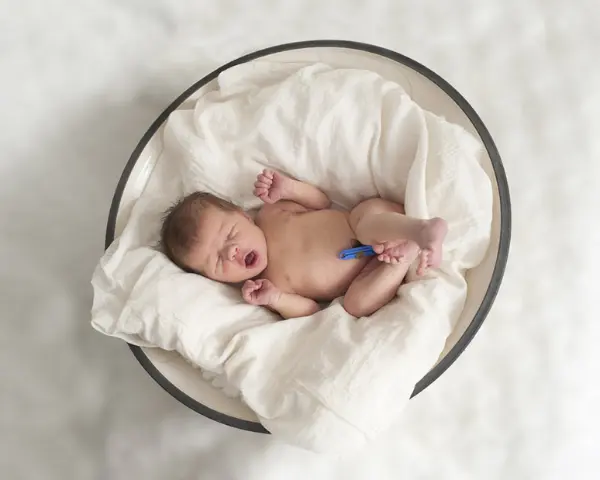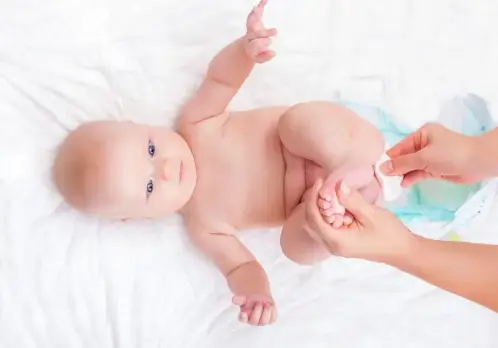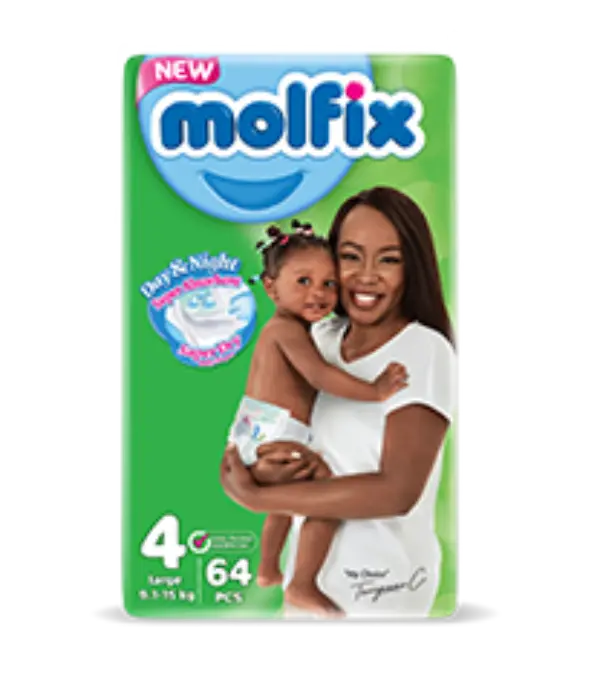.png)





Your baby lives in an oxygen free liquid environment in your womb, and obtains the oxygen and everything he/she needs for his/her development through the umbilical cord that consists of three vessels connected to the placenta from his/her belly. There is a protective gel tissue around these vessels. As he/she starts to breathe oxygen when he/she is born into the world, the vessels in the umbilical cord shut down and this piece that does not have any function anymore dries up and falls off in a week or two. However, care should be taken to follow the hygiene rules during this phase that will speed up the drying and prevent any infections. One of the common mistakes made in newborn babies is to hide the umbilical cord under the diaper after wrapping gauze over or around it. As mothers are somewhat uneasy in the care of the umbilical cord, they bundle up the umbilical cord as if it is a source of pain for the baby. But the umbilical cord that remains after birth is dead tissue and does not contain any nerves; thus it does not cause any ache or pain to the baby. The umbilical cord should be left open and no pressure should be applied to it that may prevent circulation. If the umbilical cord is hidden under the diaper, the drying process is delayed due to moisture and the risk of infection is increased. Specially designed newborn diapers for babies, which leave the umbilical cord open, speed up drying and reduce the risk of infection. I recommend that mothers use Molfix brand diapers with newborn umbilical cord notch, which has this feature in Turkey. The World Health Organization recommends that cotton with alcohol is not used in the care of the bellybutton, and leaving it open and in contact with the air speeds up the drying and falling off process by itself. If there is any discharge or odor from the umbilical cord, or rash in the navel tissue, or a rise in fever, you must contact your doctor. The baby should not be given a bath in a bathtub before the umbilical cord falls off, and he/she should be cleaned by wiping or pouring water on he/her back.
Turn the diaper change and bottom cleaning time into a special time for communication with your baby, avoid grimacing due to the dirty diaper’s appearance and smell because your face is the baby’s mirror and your baby is aware of what he/she sees on your face. Smile and talk to he/her with an excited tone of voice full of love. Your touch should be gentle, tender and filled with love, and establish facial expressions and behaviours that are specific to diaper changing times.
There are important details you should pay attention to when cleaning your baby’s bottom. It is important that you know these and also teach them to those who help you in your baby’s care. In particular, in baby girls care should be taken during cleaning the bottom not to press strongly while the genital area is being cleaned from front to back, and to avoid any stimulation. In the first days following the birth, as the digestive organs of babies are not fully developed yet, while sucking they pass stool with gas in a noisy manner, which is a highly noisy, soiling process. The stools of babies who are breastfed do not smell bad; they smell like sour milk or yogurt. Although there is so much noise, the amount of stool passed is usually little, but its frequency increases. It is a known fact that children use on average five thousand diapers until they are potty trained.
In baby boys, cleaning should be commenced first from the cleanest area, which is the groin, and the genital organ in baby boys should be wiped from top to bottom by using a new piece of cotton each time. Following this, the curly skin of the scrotum and then the anal area should be cleaned gently.
Whereas the process in a baby girl is initiated from the cleanest area, which is the groin, and while the genital area is cleaned from top to bottom, no pressure should be applied. Stimulation of the clitoris in baby girls may lead them to discover the desire to feel pleasure at an early age and she will rock as of the time she starts to sit in order to repeat this pleasure and will experience anxiety. Of course, she will have such experiences during the anal stage. This is because this is the stage when she becomes aware of her gender identity and learns to control the muscles surrounding her genital organs and feels pleasure in this area. However, her noticing this too early is related to wiping the vulva by applying a lot of pressure during diaper cleaning. After 1-2 months, when the mother can easily hold her baby, the frequency of soiling will decrease but the amount of stools will increase. The best thing to do then is to wash with a lot of soap and water, but don’t use shampoo.
When you are changing your baby’s diaper on a raised platform, never leave her alone, even for a moment: SHE MAY FALL! Babies pee 4-6 times a day. This should not be painful. If you see any discomfort, tell your doctor. Rash is encountered in many babies. This is less in breastfeeding babies. The reason for the rash is usually the babies bottom being left wet or soiled. Rash is seen more in babies who are 8-10 months old. If her bottom is not dry and clean, is soiled frequently, and is not changed at night, eats acidy food and takes antibiotics, then the rash will increase. Nevertheless, waking the baby up during the first days will make it hard for her to go back to sleep. Instead, apply a thick layer of rash cream to prevent the stools from coming into direct contact with the skin. The baby’s diaper only needs to be changed at night if there is diarrhoea.
Etiketler: Diaper/putting on a diaper




